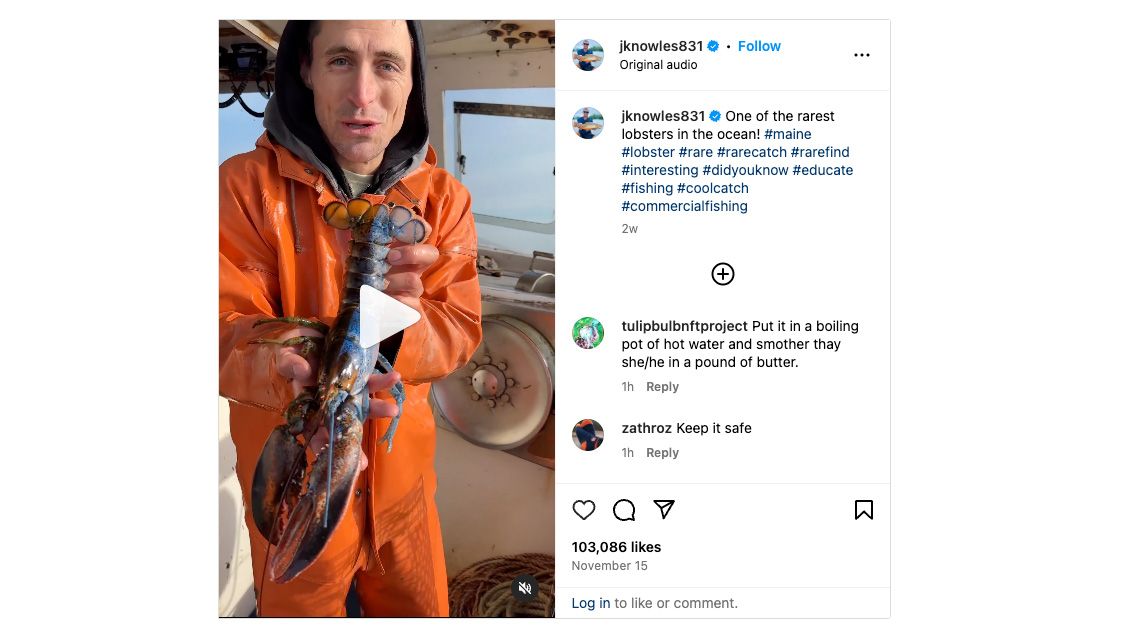It’s not uncommon for a lobster fisherman to bring up a lobster with more than one color, but more than one sex – that’s particularly rare.
Jacob Knowles, a fifth-generation Maine lobsterman, posted videos to YouTube and Instagram last week showing off just that – a lobster that appears to be half-male, half-female. He said a fellow lobster fisherman caught it and gave it to him.
“It’s the coolest lobster I’ve ever seen,” he said.
In the videos, Knowles noted fans have nicknamed the lobster “Bowie,” after the late singer/songwriter David Bowie. It’s also half-blue, which itself is a rarity. Turning it over, the genitalia running along the tail are clearly half-male, half-female.
Alex Ascher, who works as a post-doctoral investigator and marine biologist for the Woods Hole Oceanographic Institution, said an animal with both male and female genitalia is technically called a gynandromorph.
It occurs in many species with two identical halves, such as birds and butterflies. Bi-coloration, like what Bowie has, he said, occurs in about one out of every 50 million lobsters. It’s even harder, he added, to estimate the odds of finding a gynandromorph lobster that also has two colors.
“It’s certainly rare,” he said. “In terms of how rare, it’s pretty tough to say.”
The phenomenon of two sexes, Ascher said, comes from a mutation that likely occurred when the lobster was in an embryonic state.
Knowles, in the videos, indicated that in the name of scientific curiosity, not to mention the urging of his followers on social media, he is keeping the lobster alive in an underwater cage, feeding it as a pet, largely to see if the lobster produces eggs.
“I’ve seen pictures of them before, growing eggs on half their tail,” he said. “It would be super-cool to see if we could hold onto this lobster for a couple months through the winter, (and) get it to grow eggs.”
Ascher said Knowles’ experiment may prove successful.
“Typically, the ovaries do work, and will produce eggs,” he said.
As to whether those eggs would be viable, Ascher said, that’s a different story. It’s unlikely, he said, that the eggs would spontaneously fertilize on their own, and he has never heard of a gynandromorph lobster that could fertilize its own eggs.
“Typically, the male would pierce the female and deposit its sperm, and it’s not going to be able to do that,” he said.
Even with the help of another lobster, Ascher said, it’s possible the eggs would not actually be viable.
Regardless of the outcome, Knowles said he suspects the rare lobster may ultimately find a home with a museum or aquarium, rather than on the dinner table.



